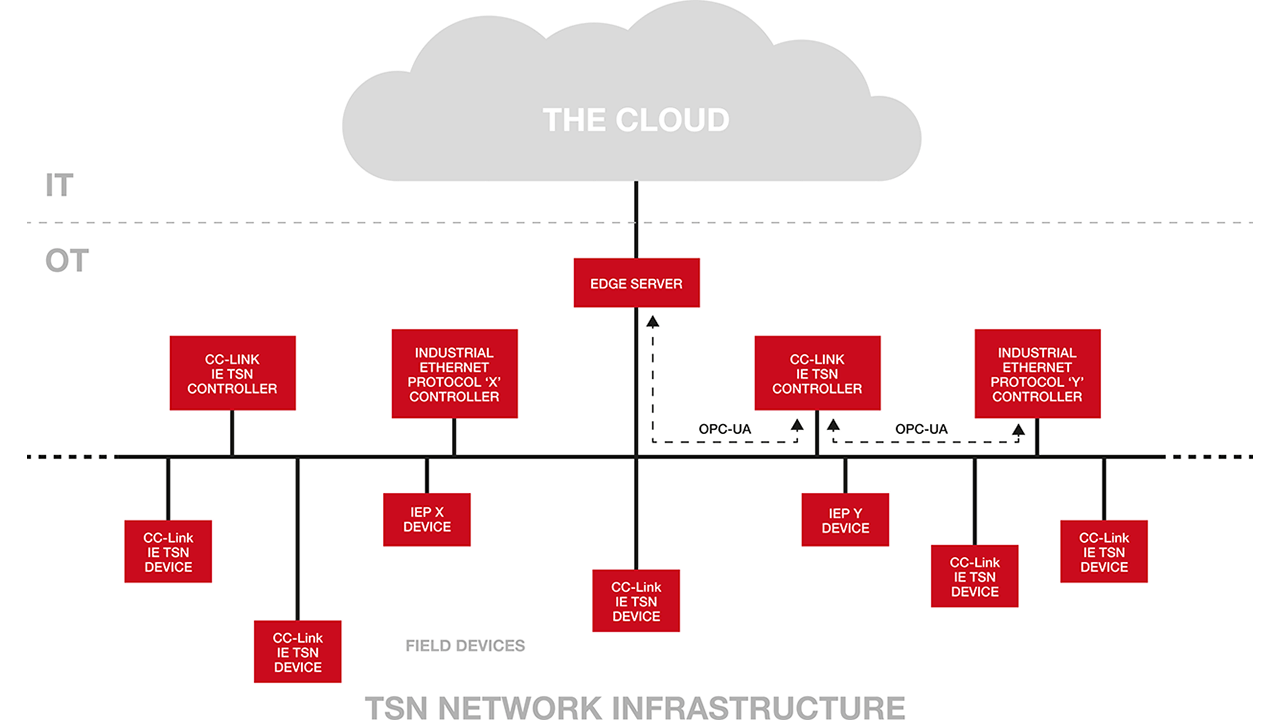TechnologySeptember 20, 2021
CC-Link update focuses on time-sensitive networking

The Industrial Ethernet Book reached out to CLPA for a general update on CC-Link technology, technical priorities and areas of concentration for new applications. This special report provides insight into the direction of CC Link, application successes and its focus on time-sensitive networking solutions.
The CC-Link Partners Association (CLPA) is committed to delivering state-of-the-art technologies that support highly effective industrial communications. To this end, the organization invests in on-going improvement of its solutions, continually adding advanced technologies and recently launching the innovative CC-Link IE TSN to leverage time-sensitive networking technology.
“With CC-Link IE TSN, the CLPA is currently the only open industrial Ethernet association that offers a technology that combines gigabit bandwidth with Time-Sensitive Networking (TSN). We were first to market with this in late 2018 and continue to maintain this leadership position,” John Browett, General Manager for CLPA Europe, told the Industrial Ethernet Book recently.
“As we move further in the direction of increasing digitalization of manufacturing via Industry 4.0, we believe TSN will become more and more important. This is due to the increased process transparency it can offer via converged network architectures as well as OT/IT convergence. We strongly feel this is the future of industrial Ethernet and are continuing to work with leading vendors in the industry, such as Mitsubishi Electric, to expand the range of compatible products, Browett said.”
“We have seen adoption of CC-Link IE TSN across a range of industries, and we continue to facilitate its greater adoption worldwide. We also continue to expand our development ecosystem and are working with leading development platform vendors, such as Analog Devices, NXP and Intel, to continue this expansion. From a development perspective, our aim is to ensure there are no technical barriers to adoption of our technology in vendors’ products,” he added.
Technology challenges
Browett said that emergence of Industry 4.0 means shop floor systems generate more and more data. But there is a huge difference between data and information. To be useful, data needs to be processed to generate actionable insights to feed back into the process to optimize it.
“To do this, there are several requirements that need to be addressed. Firstly, the ability to extract the data from systems in a transparent way. Secondly, once extracted, it needs to be able to flow to the systems that can analyze it and produce the necessary insights. Finally, this information then needs to be fed back into the plant systems to produce the desired results,” Browett said.
He added that CC-Link IE TSN offers a solution to address all these challenges. First, it provides the basis for a converged network architecture that allows different traffic types to share the same infrastructure. This makes getting the data out of the process simpler.
Second, this also facilitates OT/IT convergence, so that getting the data to edge servers and the cloud is also simplified. Finally, these architectures are bidirectional, so the derived insights can be easily fed back into the required systems. The result is the basis for increased process transparency and highly optimized operations.

The goal of CC-Link IE TSN is to address industrial networking and connectivity between IT and manufacturing systems. Time-sensitive networking supported by a large community of vendors provides a solution that enhances interoperability and a rich ecosystem to support automation and control.
New technology developments
Cyber security has become a critical area for industry over the past few years as the blurring of OT and IT has offered both opportunities and challenges. CLPA recently published an extensive set of guidelines for how CC-Link IE TSN can help companies meet the challenges of preventing unauthorized access to their systems (see https://www.cc-link.org/en/cclink/security/pdf/en_security_guideline_outline.html).
These explain how the network can assist with helping to maintain compliance to standards, such as IEC 62443 and ISO 27001. This is achieved by offering a variety of capabilities, such as authentication, traffic limiting and network filtering plus logging and management functions. CLPA is working with a variety of partners and other third parties, such as Belden, Cisco and HP, to introduce a range of products and systems that support these capabilities. Full details are available at https://www.cc-link.org/en/cclink/security/pdf/en_security_compatible_products.html)
CC Link resources
CLPA also continues to offer a global network of conformance test laboratories to its partner companies. These ensure that all CLPA technology compatible products can be used with confidence by end users and OEMs alike.
They also work with our partners during the product development phase as required to make sure that the conformance testing process goes as smoothly as possible. A global network ensures maximum convenience to partners, by offering support in local time zones and languages.
This is in addition to the local support that all partners can offer on their own CLPA compatible solution offerings.
Future developments
Looking to the future, there are new areas for CC Link development and CLPA envisions continuing to make an impact on Industrial Ethernet automation and control networking.
“This is an exciting time for industrial Ethernet. TSN is one of several technologies that offer tremendous promise for the future,” Browett said. “Along with technology, we also see a greater need for cooperation between different organizations, and the CLPA has an established track record of doing this to provide better connectivity solutions. We will continue to innovate as the industry adopts new technology trends such as wireless networks. By working with our partners and other organizations, we intend to maintain our position as a technology leader with the best connectivity solutions.”
To learn more about CLPA and CC-Link IE TSN, download the white paper, “TSN – The Case for Action Now” at https://eu.cc-link.org/en/campaign/2020/tsnwp.


